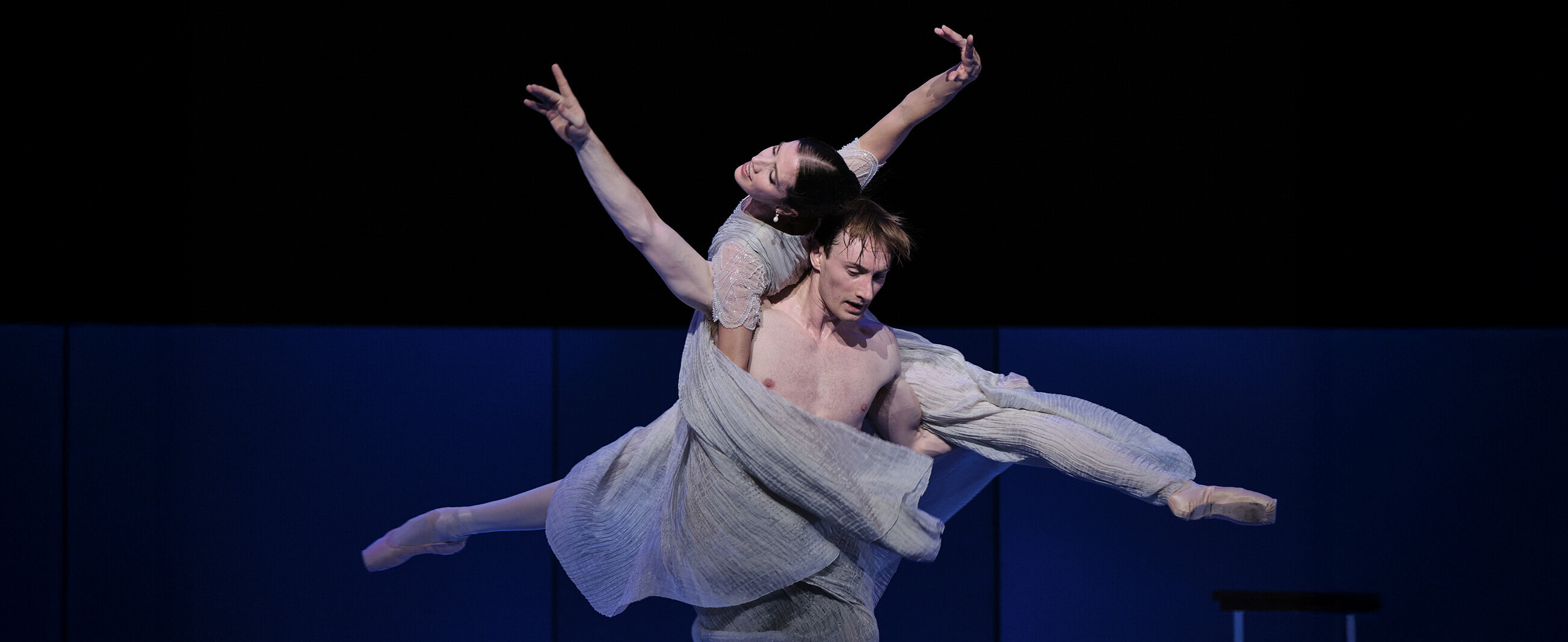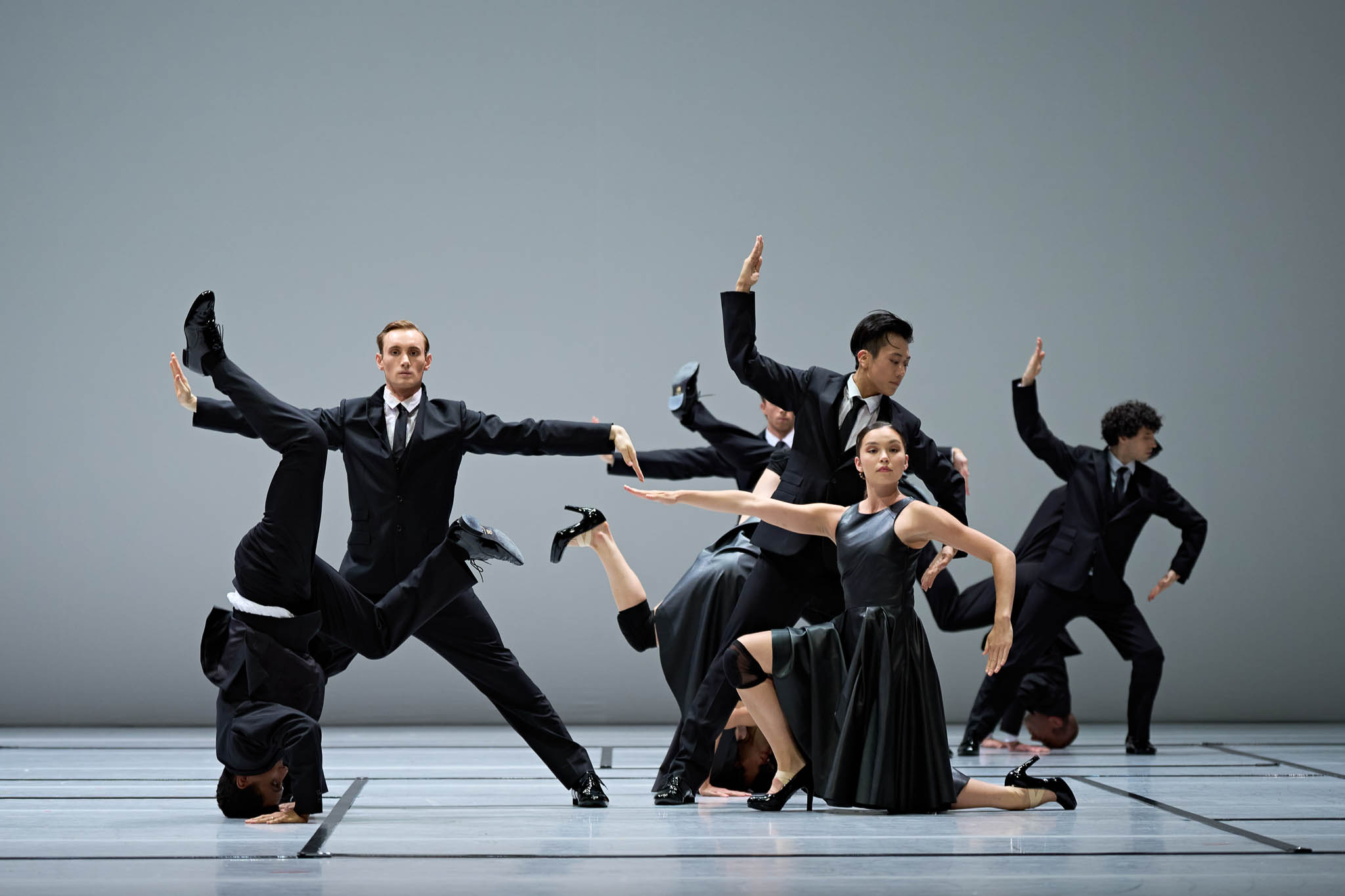
Semperoper Ballett
In the footsteps of the Semperoper Ballett
The Swiss-Canadian Kinsun Chan will take over as ballet director of the Semperoper Ballett with the 2024/25 season. He wants to continue the tradition of classical ballet and build on Dresden's dance heritage with modern works.
Within Dresden, the company is networking with other Dresden dance institutions, primarily with the Palucca School Dresden, in order to strengthen and develop new forms of collaboration between the training centre and the professional workplace. An apprentice programme has been set up in which students from the school regularly work with the company, and the Tanzplan Dresden project, in which the Palucca School of Dance, the European Centre for the Arts Hellerau and the Dresden Semperoper Ballet have joined forces, offers many exciting opportunities to discover dance from a wide range of perspectives.
In addition, the Semperoper Ballett regularly receives invitations to guest performances in cities such as Paris, Barcelona, Adelaide, St. Petersburg, Singapore, Abu Dhabi, Ottawa, London, Johannesburg, Nairobi, Antwerp, Gothenburg and New York City.
Semperoper Ballett has received numerous awards: among others, the ensemble was honoured by the ‘Semperoper Foundation - Förderstiftung’ in 2009, as was the apprentice programme in 2011. In 2015, Alexander Ekman's creation of COW received the German theatre prize ‘Der Faust’ and in 2018 the ensemble was honoured with the European Cultural Prize Taurus.
Between 2006 and 2023, under the artistic direction of Aron S. Watkin, 93 new pieces were added to the repertoire, 32 of which were world premieres or new creations of traditional narrative ballets. In addition to renowned choreographers, Aaron S. Watkin also discovers new talent for the German dance world. These include David Dawson, Johan Inger and Alexander Ekman. Likewise, young creatives from the company were given the opportunity to prove themselves choreographically in order to work as choreographers after their dance career.
With the beginning of the era of Vladimir Derevianko from the 1994/95 season to 2005/06, the ensemble operating as the Tanzbühne Dresden was renamed Ballett Dresden. The company had a special connection to John Neumeier and Uwe Scholz, who transferred some of their most successful choreographies to Dresden. The contemporary continuation of classical dance came to the ensemble's repertoire in 2004 with works by choreographer William Forsythe.
The world of the legendary Ballets Russes was brought back to life with the staging of Derevianko's Chopinina, The Firebird and Petrushka, reconstructed by Andris Liepa. The Ballets Russes ensemble, which played a major role in the development of dance, particularly at the beginning of the 20th century, enjoyed highly successful guest performances at the Semper Opera House in 1912, 1913 and 1927.
In the 1991/92 season, Johannes Bönig, a young choreographer coming from the independent dance scene, took over the position of ballet director. His concept was consistently oriented towards contemporary dance forms. During this period, the young choreographer Stefan Thoss in particular attracted nationwide attention with his premieres.
Harald Wandtke, who took over the direction of the ballet ensemble after Vera Müller, left his mark on the development of ballet with his own choreographies. He continued the tradition of modern expressive dance in Dresden with improvisation evenings and a series of Dancers' Contrasts. In addition to Wandtke, choreographers such as Oleg Winogradow, Konstantin Russu, Hilda Riveros, Emöke Pösztenyi and Birgit Cullberg worked with the Dresden ensemble and enriched its expressive possibilities with their own creations. The ballet returned to Semper's opera house in 1985 with the premiere of Harald Wandtke's ballet ‘Brennender Friede’ (Burning Peace) to music by Udo Zimmermann.
The years from 1956 to 1964 were decisively influenced by the choreographer Tom Schilling. He brought Peter I. Tchaikovsky's Swan Lake and Sergei Prokofiev's The Stone Flower to Dresden in 1959 as the first performance in the GDR. But his production of Werner Egk's Abraxas in 1957 and the premiere of Otto Reinhold's Die Nachtigall (The Nightingale) in 1958 also attracted a great deal of attention.
Mola Hillebron, who led the ensemble from 1964 to 1968, was followed by Vera Müller. One of her most important works was the first performance of Aaron Copland's Rodeo, which she brought to the GDR in 1968, a piece of American dance history. The first performance of But We Call Love Living Peace, with music by Rainer Kunad, addressed fundamental questions of the time, and in 1972 it led the series of anti-war ballets. It was continued with the staging of The Green Table in the choreography of Kurt Jooss and Harald Wandtke's choreographic premieres of Apokalyptica and Burning Peace.
Shortly before the theatre stages were closed due to total war in August 1944, the choreography Princess Turandot by Tatjana Gsovsky was premiered. Valeria Kratina, who had taken over from Ellen Cleve-Petz 10 years earlier, was the director of the ballet. Ellen Cleve-Petz, in turn, was the director of the ballet ensemble and, during her tenure between 1924 and 1934, choreographed, among other works, Joseph's Legend and Couperin Suite by Richard Strauss.
The ballet at the Dresden Court Theatre only established itself as an independent entity towards the end of the 19th century. In his report on the present-day Dresden Court Theatre, Ernst Roeder cites the Puppenfee (The Fairy of the Puppets), with music by Joseph Bayer, which was first performed in Dresden in 1889, as the beginning of this development. Before the Puppenfee, Dresden's entire ballet repertoire was The Jumping Suitor by ballet master Robert Köller.
After Köller's departure, Otto Thieme took over the direction of the ballet and continued the successful series in 1896 with Léo Delibes' ballet Coppélia. Another Delibes ballet was performed in 1901: the year before, August Berger had taken over the direction of the ballet and staged Sylphia ou La Nymphe de Diane.
The ballets of the ‘romantic era’ were mainly divertissements and pantomime-comedy ballets. A contemporary report on the Dresden Court Theatre from 1852 provides an insight into this not very glamorous period of ballet. Only in exceptional cases did they turn to productions that were independent of the opera for guest performances by ballet stars of the era such as Fanny Cerrito, Arthur Saint-Léon or Lucile Grahn.
The founding of Semperoper Ballett can be dated to 1 April 1825, when three ladies with professional training in dance were hired and paid a fixed salary. The impetus for this had been given as early as 1817 by Carl Maria von Weber, the royal music director, with his demand for a dance master. This was followed by the appointment of a dance master in the person of the actor Adolph Simoni and, in 1821, Carl Gärtner as ‘Maitre de Ballet’.
Audition for 2026/27 season
The Semperoper Ballett and Artistic Director Kinsun Chan are searching for exceptionally skilled dancers for our Company and Apprentice Program.
We seek dancers with strong artistry and dynamic movement qualities who contribute to the creative process and thrive on performing a wide range of choreographies, strong classical and contemporary technique are required, improvisational skills are a plus.
The Semperoper Ballett is an internationally renowned ballet company whose exciting and diverse repertoire ranges from the classics to contemporary works of today.
In accordance with the International Audition Pre-Selection Guidelines, please apply and submit the following material to audition.ballett@semperoper.de by 22 February 2026:
- a CV
- a head shot
- 2-3 dance photos that reveal the dancer’s full body proportions and line
- a publicly accessible video link (preferably on Youtube) with no introduction or special editing, consisting of the following performed in leotard and tights for women and tight fitting dance attire for men:
- a short classical variation drawn from the standard repertoire, danced in pointe shoes by female applicants
- a short contemporary variation or improvisation that illustrates your command of a range of movement different from that demonstrated in the classical variation
- 3-5 minutes of barre work, incorporating both sides, danced in soft shoes by male applicants and pointe shoes by female applicants
- 3-5 minutes of centre work that includes adagio, pirouettes, petit and grand allegro, danced in pointe shoes by female applicants
The audition will take place on 29 March 2026 at Semperoper Dresden, Germany. Please note that attendance is by invitation only!
The Company
The international artistic Team and dancers making up Semperoper Ballett ensure the company’s brilliant reputation both in Dresden and around the world.

Engagement
The Apprentice Programme offers young dancers the opportunity to gain practical experience with the Semperoper Ballett while studying at the Palucca University of Dance Dresden.
